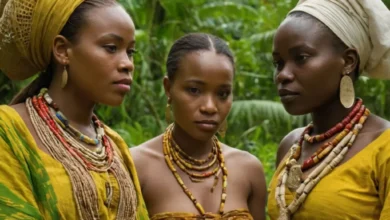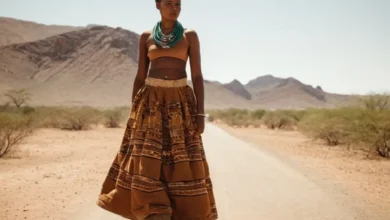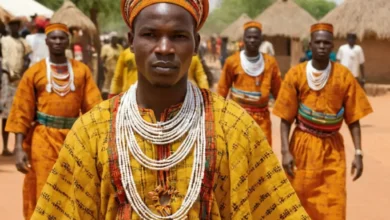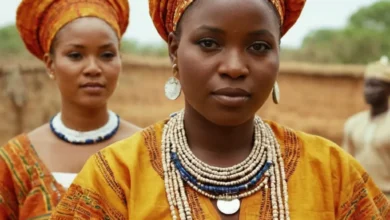Tanzanian Traditional Clothing
Tanzania, a vibrant nation in East Africa, boasts a rich tapestry of cultures, each with its unique traditions and expressions of identity. Among these expressions, clothing plays a pivotal role, serving as a visible symbol of heritage, social status, and personal style.
From the iconic kanga to the versatile kitenge, Tanzanian traditional clothing weaves together threads of history, artistry, and cultural significance.
The Significance of Clothing in Tanzanian Culture
Clothing in Tanzania is not merely a means of covering the body but a powerful medium of communication. It speaks volumes about an individual’s tribe, age, marital status, and social standing.
Traditional attire is often worn during special occasions, ceremonies, and festivals, showcasing the pride and unity of the community. The intricate patterns, vibrant colors, and symbolic elements woven into the fabric tell stories that have been passed down through generations.
See also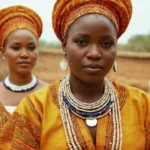 Togolese Traditional Clothing: Reflecting Ewe and Other Ethnic Traditions
Togolese Traditional Clothing: Reflecting Ewe and Other Ethnic Traditions
Kanga: A Canvas of Stories
The kanga, a rectangular piece of brightly colored cotton fabric, is arguably the most recognizable symbol of Tanzanian culture. It is a versatile garment, serving as a wrap, a head covering, a shawl, and even a carrying cloth.
The beauty of the kanga lies not only in its vibrant colors but also in the intricate patterns and sayings printed on it. These sayings, known as misemo, are often proverbs, wise sayings, or romantic messages that reflect the social and cultural values of the Tanzanian people. Each kanga, therefore, carries a story, a message, and a piece of cultural identity.
The kanga holds a special place in Tanzanian society, transcending its practical use. It serves as a form of communication, a symbol of affection, and a tool for expressing emotions. During social gatherings, women often exchange kanga as gifts, strengthening bonds and fostering a sense of community. The act of gifting a kanga is a gesture of respect, admiration, and friendship.
Kitenge: A Tapestry of Diversity
Another significant piece of Tanzanian traditional clothing is the kitenge. Similar to the kanga, the kitenge is a rectangular fabric, typically made of cotton or rayon, and often adorned with bold patterns and colors.
See also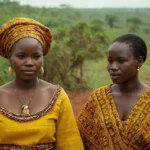 Ugandan Traditional Clothing: Barkcloth, Gomesi, and Other Cultural Attire
Ugandan Traditional Clothing: Barkcloth, Gomesi, and Other Cultural Attire
Unlike the kanga, the kitenge is usually larger and serves as a versatile garment for both men and women. It can be draped as a skirt, wrapped as a dress, or used as a headscarf. The kitenge‘s adaptability and versatility make it a popular choice for daily wear and special occasions.
The kitenge‘s intricate patterns and vibrant colors often draw inspiration from nature, tribal symbols, and traditional designs. Each tribe in Tanzania has its unique kitenge patterns, further solidifying the garment’s role as a representation of cultural identity. The kitenge is also a canvas for artistic expression, with artisans incorporating various techniques, such as embroidery, beading, and tie-dye, to create unique and personalized garments.
Beyond Kanga and Kitenge
While the kanga and kitenge are undoubtedly iconic, Tanzanian traditional clothing extends beyond these two garments. Different tribes throughout Tanzania have their distinct attire, each reflecting their unique cultural heritage.
- The Maasai, known for their vibrant red attire, wear elaborately beaded necklaces, bracelets, and earrings. Their traditional clothing, made from animal hides and adorned with intricate beadwork, is a testament to their nomadic lifestyle and connection to nature.
- The Chagga, who reside in the slopes of Mount Kilimanjaro, are known for their colorful wraps and shawls, often adorned with intricate embroidery and beadwork. These garments are not only aesthetically pleasing but also serve as practical protection from the elements in the mountainous region.
- The Sukuma, one of the largest tribes in Tanzania, wear colorful and patterned garments, often adorned with intricate beadwork and embroidery. Their clothing is a symbol of their rich agricultural heritage and their connection to the land.
The Evolution of Traditional Clothing
Tanzanian traditional clothing is not static; it constantly evolves, adapting to changing times and incorporating influences from other cultures. Modern designers are blending traditional patterns and motifs with contemporary styles, creating innovative and stylish garments that appeal to a wider audience.
This fusion of tradition and modernity is evident in the growing popularity of Tanzanian fashion brands that incorporate traditional elements into their designs.
The use of traditional fabrics and patterns in modern fashion has helped to revitalize the craft of weaving and dyeing, providing opportunities for artisans and entrepreneurs. It has also created a platform for celebrating and preserving Tanzanian cultural heritage.
The Importance of Preserving Tradition
Despite the increasing globalization and exposure to western fashion, Tanzanian traditional clothing remains an integral part of national identity. It is a source of pride and a reminder of the country’s rich cultural heritage.
Preserving these traditions is vital, not only for the sake of cultural continuity but also for its economic benefits. By promoting and supporting traditional crafts and fashion, we can create opportunities for artisans, preserve cultural knowledge, and contribute to the economic development of the country.
The Future of Tanzanian Traditional Clothing
The future of Tanzanian traditional clothing looks bright. With the growing interest in cultural heritage and the rise of ethical fashion, there is a renewed appreciation for handcrafted and sustainable garments. The use of traditional fabrics and patterns in modern designs is opening new avenues for creativity and innovation.
The younger generation, especially, is embracing traditional attire as a way of expressing their identity and connecting with their cultural heritage.
Tanzanian traditional clothing is more than just garments; it is a powerful symbol of cultural identity, a testament to the artistry and resilience of the Tanzanian people, and a reminder of the country’s rich history and heritage. As the country continues to evolve, its traditional clothing will undoubtedly play a significant role in shaping its future, reflecting its dynamism, adaptability, and pride in its heritage.
Frequently Asked Questions (FAQs)
What is the difference between a kanga and a kitenge?
The main difference between a kanga and a kitenge lies in their size and intended use. A kanga is typically smaller and is often worn as a wrap, a head covering, or a shawl. It also often features a saying or proverb printed on the fabric. A kitenge, on the other hand, is larger and is often used as a skirt, a dress, or a headscarf. It is typically adorned with bold patterns and colors.
How is Tanzanian traditional clothing used in modern fashion?
Modern Tanzanian designers are incorporating traditional patterns, motifs, and techniques into contemporary designs. This blend of tradition and modernity is evident in the growing popularity of Tanzanian fashion brands that incorporate traditional elements into their designs, creating stylish and innovative garments that appeal to a wider audience.
What are the benefits of preserving Tanzanian traditional clothing?
Preserving Tanzanian traditional clothing is important for several reasons. It helps to maintain cultural continuity and heritage, supports local artisans and businesses, and creates opportunities for economic growth. It also fosters a sense of pride and identity among the Tanzanian people.
Tanzanian traditional clothing is a captivating reflection of the country’s cultural tapestry, weaving together threads of history, artistry, and social significance. From the iconic kanga to the versatile kitenge, these garments serve as powerful symbols of identity, representing the diverse tribes, traditions, and values of the Tanzanian people.
As the country embraces modernity, preserving and celebrating its rich cultural heritage through traditional clothing remains vital. It ensures that future generations can connect with their roots, appreciate the artistry of their ancestors, and take pride in their heritage.
The vibrant colors, intricate patterns, and symbolic significance of Tanzanian traditional clothing continue to enchant and inspire, reminding us of the enduring power of cultural expression.
